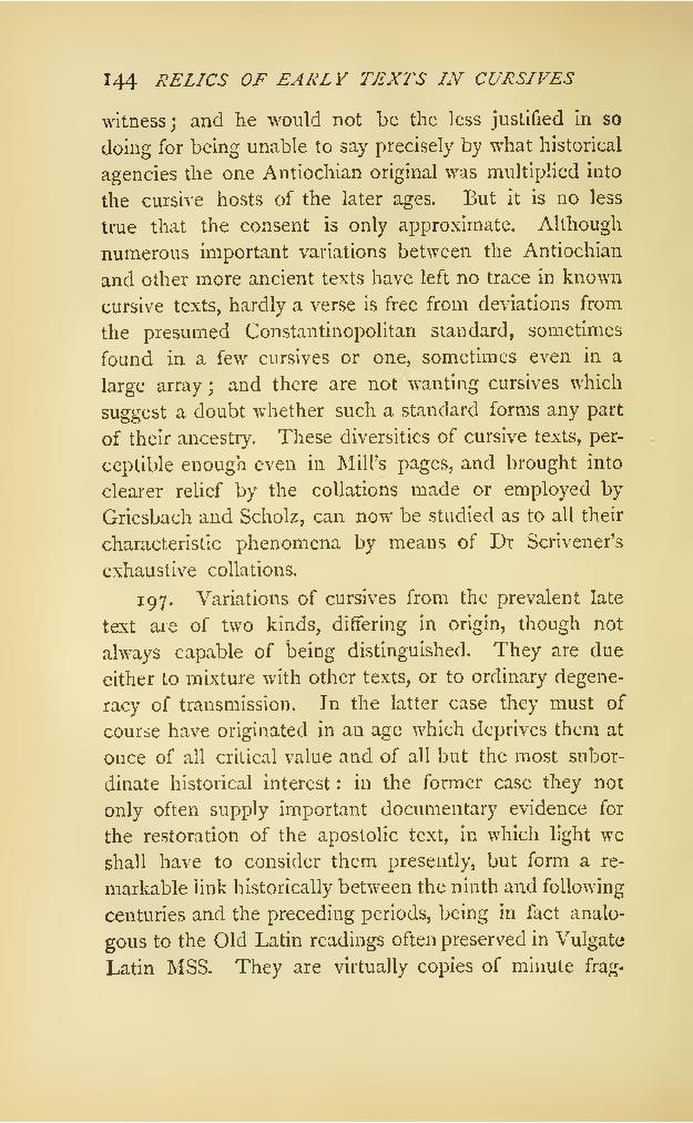witness; and he would not be the less justified in so doing for being unable to say precisely by what historical agencies the one Antiochian original was multiplied into the cursive hosts of the later ages. But it is no less true that the consent is only approximate. Although numerous important variations between the Antiochian and other more ancient texts have left no trace in known cursive texts, hardly a verse is free from deviations from the presumed Constantinopolitan standard, sometimes found in a few cursives or one, sometimes even in a large array; and there are not wanting cursives which suggest a doubt whether such a standard forms any part of their ancestry. These diversities of cursive texts, perceptible enough even in Mill's pages, and brought into clearer relief by the collations made or employed by Griesbach and Scholz, can now be studied as to all their characteristic phenomena by means of Dr Scrivener's exhaustive collations.
197. Variations of cursives from the prevalent late text are of two kinds, differing in origin, though not always capable of being distinguished. They are due either to mixture with other texts, or to ordinary degeneracy of transmission. In the latter case they must of course have originated in an age which deprives them at once of all critical value and of all but the most subordinate historical interest: in the former case they not only often supply important documentary evidence for the restoration of the apostolic text, in which light we shall have to consider them presently, but form a remarkable link historically between the ninth and following centuries and the preceding periods, being in fact analogous to the Old Latin readings often preserved in Vulgate Latin MSS. They are virtually copies of minute frag-
